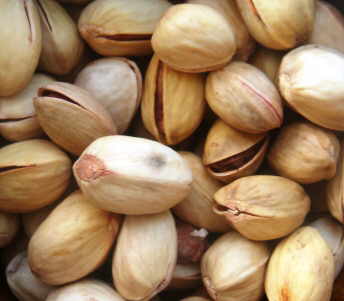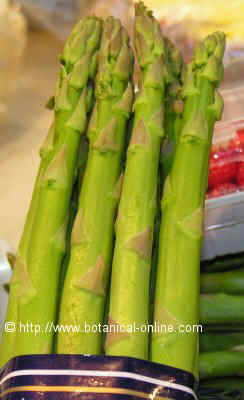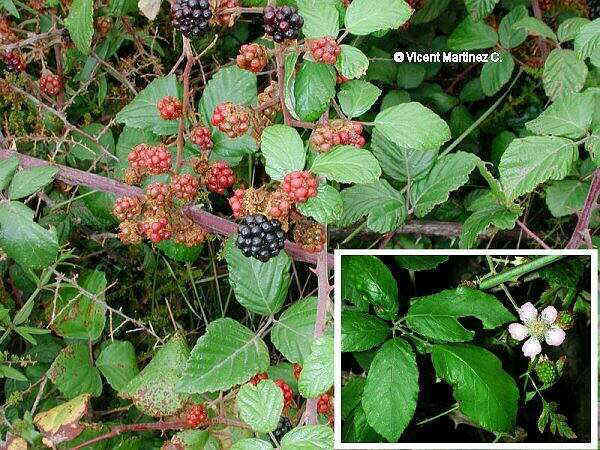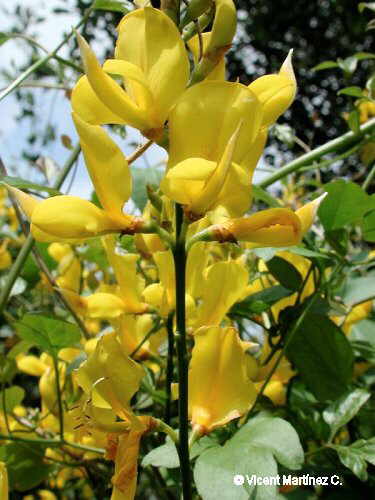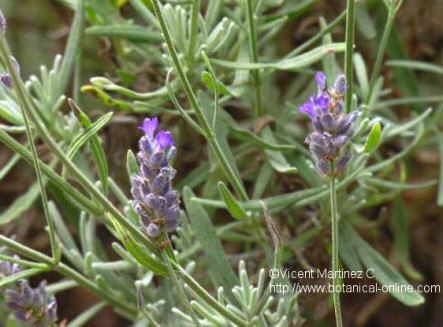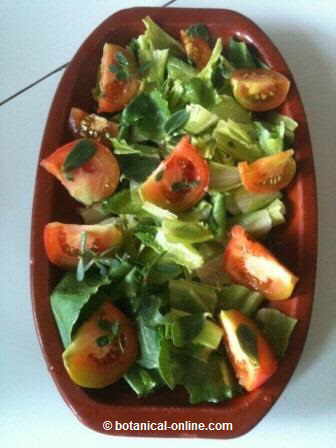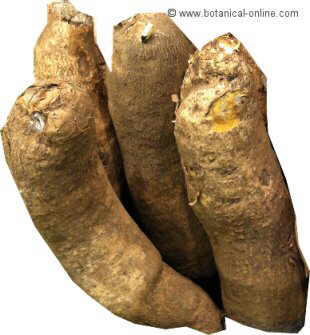What are the most common edible wild plant parts (fruits, seeds, etc)
List of wild fruits and other wild plant parts that can be eaten
From D to O |
| Name | Edible parts | Habitat |
|---|---|---|
Taraxacum officinale | Tender leaves in salad or as a vegetable. Roasted young roots and older roots roasted to replace coffee. Flower buds can be boiled as a vegetable. Flowers to aromatize wines and fritters. | In grasslands from spring to autumn. |
Phoenix dactylifera | Dates to eat raw or with meals | Plant native to North Africa and Arabia and cultivated for its fruits and as a square or garden tree in many parts of the world. |
| In addition to dates, with the sap brews are made; with dates, alcohol and vinegar. | ||
Dill Anethum graveolens | Tender leaves to flavor foods. Seeds to give more taste to salads | Cultivated plant, sometimes naturalized in mountain fields. |
Rosa canina | Rose hips (fruits) to make jams and syrups, flower petals to flavor salads and cakes. Dried young leaves and roots for tea. The petals of the cultivated roses are also edible and with them the jams or the cakes are aromatized. It can be caramelized to add to cakes or fried with egg to make tortillas. | Next to roads, paths and uncultivated fields in summer. |
All species of roses are edible. Its fruits contain huge amounts of vitamin C and have been used in times of war when fresh fruits or vegetables were missing. They constitute a means of natural survival in the field by enduring in the tree throughout the autumn and winter. We just have to be careful to remove the seeds and hairs that irritate the mouth. Medicinal plant (See information) | ||
| Elder, elderberry Sambucus nigra | Berries to eat alone or, above all, to make jams, especially with blackberries. The flowers can be eaten fried in the form of fritters.
| In moist soils and hedges from the summer to the autumn. |
| The American species: Sambucus canadensis and Sambucus cerulea also have edible berries and flowers. The Mexican species Sambucucus melocarpa has edible berries. All elder species in the seeds contain cyanogenetic glycosides (cyanide generators) and in the bark as well as in the immature leaves and fruits they contain the principle of sambunigrin which, in contact with an enzyme, called emulsine, also produces hydrocyanic acid . You should not eat, then, their raw fruits, which are edible when subjected to cooking or maceration. The bark can be toxic, especially at high doses. Similarly, the contact of the leaves or berries on the skin can cause cases of dermatitis. The symptoms they produce in case of intoxication are similar to those that result from ingesting bitter almonds. Not to be confused with the Sambucus ebulus (danewort, dwarf elder) very similar, although with herbaceous bearing and foul smell. Its fruits are very toxic. | ||
| English hawthorn Crataegus laevigata | The leaves for cooking and for their medicinal properties
| In forests in spring |
| Hawthorn also has edible berries, which are generally used to make jams, such as the May Texas hawthorn (Crataegus aestivalis) whose fruits, unlike most hawthorn, do not ripen in the fall but in late spring. Indians use dried thorns to flavor dried meat. | ||
| European speedwell , brooklime Veronica beccabunga | Young leaves cooked | In streams or streams of water during spring. |
Oenothera biennis | The roots cooked before the flowers are produced during the first winter. They have a very strong flavor so they should be boiled a couple of times. The flowers to flavor the salads. | Along the roads, roads and sandy places from autumn to spring. |
Plant of North American origin that was introduced in Europe in the seventeenth century as fodder for animals, especially pigs. In America it was previously used to feed cattle and in human food. The roots were boiled or caramelized. | ||
Foeniculum vulgare | The fat petioles of the leaves as a vegetable or salad together with the most tender leaves. Seeds to flavor foods or drinks. along with roads, highways and uncultivated fields in summer. | Along roads, highways and uncultivated fields in the summer. |
Medicinal plant (See information) | ||
Field pepperwort Lepidium campestre | Raw tender leaves to aromatize salads, boiled as vegetables. | On roads or uncultivated places during the spring and the summer. |
It has a very strong flavor so it should be used in small quantities, unless boiled and the water changed a couple of times. | ||
Epilobium angustifolium | Tender leaves in salads or cooked. The medulla of the old stems to make soup or to chew. | Along the roads or on mountain embankments in spring or summer. |
Canadians know this plant as wild asparagus, since they use it a lot since they collect young shoots in spring and cook them as if they were authentic asparagus. | ||
Garden asparagus | Las yemas jóvenes en tortilla o en sopa | In banks and abandoned lands in spring |
Garlic mustard | Young leaves and legumes in salad or cooked in soups or with meat | In shady areas of forests and hedges in the spring and the summer |
Ginkgo biloba L | The fruit is covered with a sticky and smelly pulp. A very hard protection appears inside which there is a kind of almond or nut. Only part of it is edible, after we have removed a kind of surrounding skin with hot water. These nuts were used as food in China and Japan for their nutritional power since they are very rich in carbohydrates. Toasts are served.The rest of the fruit is irritating. | In parks and gardens during the fall |
Glasswort Salicornia europea | Tender shoots in salad or cooked with other vegetables | In salt marshes or marshes from spring to autumn. |
Good-king-Henry, Perennial Goosefoot, Chenopodium bonus-henricus | The tender shoots in tortillas with egg and battered with flour and the tender leaves boiled with a couple of waters. | In vacant lots, abandoned lots, roads and grasslands |
| Medicinal plant with compromising properties (very useful for the treatment of external skin wounds) and diuretics (helps eliminate fluids from the body) Plant rich in oxalates. Its consumption should be moderated and those who have kidney problems or tend to produce stones should never eat it. | ||
Sanguisorba officinalis | Early leaves and young shoots to flavor salads | In grassy places |
Ground ivy Glechoma hederacea | Young shoots cooked | In humid forests and grassy places during the spring |
Corylus avellana | The fruits | In sparse mountain forests |
Lamium amplexicaule | Sprouts and young leaves in spring to eat raw in salad or cooked | In fields and badlands in the spring and the summer |
Húmulus lupulus | Fresh leaves in salad and boiled. Tender shoots like asparagus. Floral cones to produce beer. | Along roads and uncultivated mountain lands during the spring and the summer. |
The cones contain a hypnotic, called lupulin, which has been used as a medicinal plant to facilitate sleep, to control nerves or to cut diarrhea. | ||
Iceland moss Cetraria islandica | The plant boiled and sweetened with sugar, wine and honey. | It grows in the mountains. Medicinal plant used to stimulate appetite. |
Cercis siliquastrum | Flower buds raw, fried or cooked. Legumes, fried with other vegetables. . | Planted in many gardens, blooms in early spring |
The American species Cercis canadensis also has edible floral buds | ||
Juniperus communis | Ripe fruits to flavor foods or to flavor gin. Well dried and roasted fruits as a coffee substitute. Inner bark is edible | In dry mountain areas |
The Californian species (Juniperus californica) also has edible fruits that the natives use abundantly. Juniperus drupacea of Asia Minor produces an edible fruit called habbel. | ||
Lady’s bedstraw Galium verum | Leaves and gems to coagulate the milk and produce cheese.. | In fields and dry banks during the summer |
Medicinal plant used for the treatment of epilepsy and to increase the level of urination. The Eurasian and North American species Galium aparine has tender leaves that can be cooked as a vegetable and seeds that, when dried, constitute a good substitute for coffee. | ||
Larch Larix ssp. | Raw or crushed inside crust for cooking. Young shoots in case of much need. | In high mountains of Europe, Asia and America. Very abundant in North America and Siberia. |
Medicinal plant for the treatment of colds | ||
Melissa officinalis | Tender leaves to enhance salads | In wet banks and forests during the summer |
Citrus limonum Risso | In addition to lemons, you can fry its leaves battered in milk flour and sugar. | Cultivated because of its fruits and as a garden tree in warm Mediterranean areas by the sea. It is probably derived from the species »Citrus medica L.», native to India. |
Tilia vulgaris Tilia platyphyllos Tilia cordata | Tender leaves in salads | In forests or parks at the end of spring or during the summer |
| Medicinal plants used to calm the nerves (See more information) | ||
Lotus Nelumbo ssp. | The leaves before opening fully boiled, the roots cooked or roasted, the seeds fresh, cooked or ground as flour. | In fresh waters of China, Japan, America and India. Cultivated as a pond plant in other regions of the world. |
Althaea officinalis | Young leaves in salad; floral buds in vinegar and roots in fried pieces. | Originally from North Africa and West Asia, it can be found as a plant grown in numerous gardens and feral in some places. |
Medicinal plant, rich in mucilage, with healing properties of the skin, stomach and antidiarrheal. . The other species of Althaea also have young edible leaves. | ||
Meadow salsify, Jack-go-to-bed-at-noon Tragopogon pratensis Tragopodon porrifolius | Leaves and tender shoots in salad or as a vegetable. Raw or, better, boiled roots. | Along the roads, roads, in sandy areas not cultivated from spring to summer. |
Tragopodon pratensis has a root with black skin, while Tragopodon porrifolius (Purple salfisi) has white. The latter is also grown as a vegetable to take advantage of its root that is eaten like carrots | ||
Fresh leaves in salads or roasted seeds as a coffee substitute. | On roads, highways or uncultivated places during spring and summer. | |
Medicinal plant | ||
Mulberries can be eaten raw or in marmalade | Cultivated tree from West Asia | |
In addition to this species we have to consider others: White mulberry (Morus alba) from China and grown to feed silkworms, also edible. In U.S.A, spring shoots are also eaten in spring, once cooked and seasoned with butter. A very abundant species is the black mulberry (Morus nigra) with edible tender fruits and sprouts provided that the former are very ripe and the last cooked since, if not, they have hallucinogenic properties. | ||
Sinapis arvensis | Tender leaves in salad or cooked. Chopped mustard seeds | On roads, highways or uncultivated places during the spring and the summer. |
Urtica dioica | Boiled leaves eaten as vegetables or in bechamel and baked in gratin with cheese. | In cultivated fields or abandoned lands, in spring and summer |
| It is not advisable to abuse this plant because, in some cases, it can cause stomach reactions. It is a species that, when living in areas rich in organic waste, tends to accumulate large amounts of nitrates in its tissues, so, if not taken in moderation, it can be harmful. In some cases, its ingestion has produced adverse skin reactions and problems with urination. In contact with the skin, your stinging hairs are the cause of causing strong stinging. Hands should be protected to prevent them from itching. Once cooked, they lose their acid. | ||
Quercus ssp. | The fruits of these trees, called acorns, cooked when they are bitter or eaten raw in moderate quantities when they are sweet. The leaves for their medicinal properties. | In forests during the fall |
| Acorns, which have been one of the main sources of food for primitive peoples and livestock, contain large amounts of tannins so they must be boiled so as not to be toxic. Once boiled they can be eaten or dried to prepare flour. When roasted they can be used to replace coffee (More information on how to make acorns edible) | ||
Atriplex patula | The leaves to eat cooked in the form of vegetables | In abandoned places during spring and summer. |
Hemerocallis fulva | The flowers to season fresh salads or to add to cooked meals, from soups to meat. Tubers can be eaten raw or cooked. Young gems can be added raw to salads or can be prepared boiled. | Originating in Asia, they can be found as garden plants in many regions of the world |
Origanum vulgare | Tender leaves to flavor foods | Next to the banks, dry fields and dry hedges in the early autumn. |
| Medicinal plant (See information) | ||
From D to O |
![]() More information on wild flowers and edible wild plants
More information on wild flowers and edible wild plants
20 March, 2025

